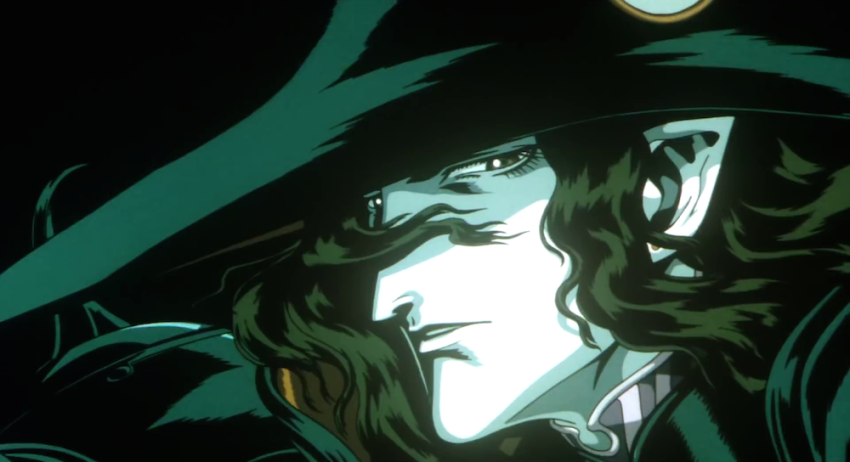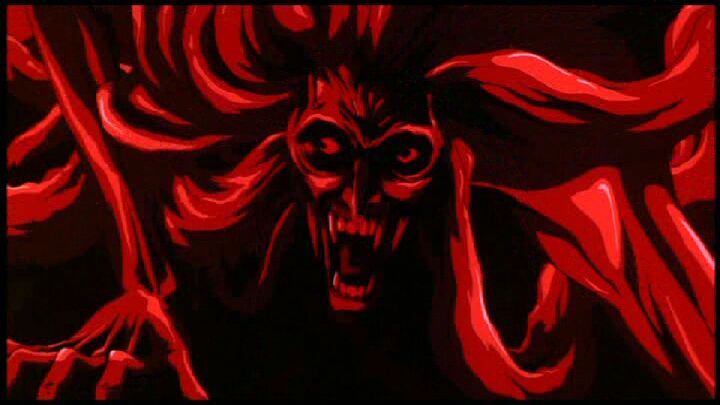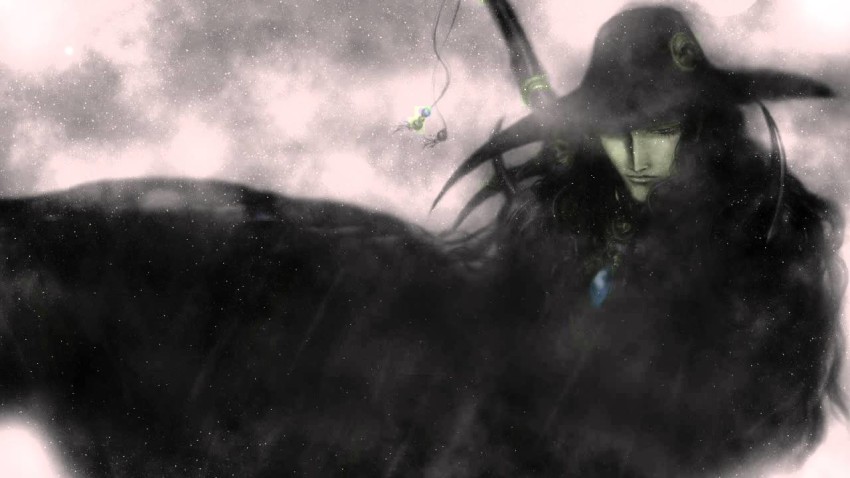121st Century Bloodsucker
February 9, 2023 · 0 comments
By Tom Wilmot.

Few long-running franchises touch as many mediums as Vampire Hunter D. The brainchild of prolific author Hideyuki Kikuchi, the series has spawned over thirty novels, two animated movies, a video game, a manga series, and several radio dramas. As well as making a mark domestically, Vampire Hunter D is widely recognised in the West, mostly due to the international distribution of its anime adaptations. As the series celebrates its fortieth anniversary, the dhampir’s onscreen absence is notable, particularly in the wake of Powerhouse Animation’s success with Castlevania (2017-21). Despite not gracing the screen since Yoshiaki Kawajiri’s Vampire Hunter D: Bloodlust (2000), D’s two cinematic outings remain among the most significant in modern anime history.
Born in Chiba prefecture in 1949, Hideyuki Kikuchi has garnered a stellar reputation as one of Japan’s leading horror authors. Both the work of manga artist Osamu Kishimoto and Hammer studio’s Dracula (1958) served as a major influence for what would become Vampire Hunter D, the first novel landing on shelves in January 1983. Under the impression that the series would not be published as a horror alone, Kikuchi set D’s tale in the far-flung future of 12,090 AD, thus making it a more marketable sci-fi story.

The melding of genres is one of Vampire Hunter D’s most appealing aspects, as Kikuchi seamlessly mixes classic gothic horror with a nuclear-induced post-apocalypse. The author once noted, “D was in a world of sci-fi mixed with horror, and I indulged myself by adding my beloved Westerns, too.” This latter influence is noticeable throughout the series, with D characterised as a lone gunslinger of sorts. It’s easy to draw parallels between the first novel and George Steven’s Shane (1953), D fulfilling Alan Ladd’s titular role.
The first stab at adapting Kikuchi’s novel came in 1985 with Toyoo Ashida’s simply titled Vampire Hunter D. Produced by Ashi Productions, the film was developed at a time when mid-budget anime was churned out to flood the Japanese home video market. A condensed version of Kikuchi’s narrative allows for a brisk yet faithful introduction to the author’s rich fantasy world. Enthusiastically billed in one behind-the-scenes featurette as “a remarkable science fiction horror spectacular romance”, the film is a dark, lewd, and graphic affair reminiscent of similarly mature OVAs of the era.
For a film that’s nearing forty years old, Vampire Hunter D holds up remarkably well. While criticism has been levelled at the movie’s cheap appearance, including from Kikuchi himself, the 2015 Sentai Filmworks restoration highlights the rich colours and fine details of the animation. The dire post-apocalyptic landscape of the novel is beautifully realised despite the budgetary limitations, as harsh tones and gothic imagery are accompanied by Tetsuya Komuro’s eery and ethereal score. As with Ashida’s Fist of the North Star (1986), the imperfections in the animation give an inherent grit to the visuals that helps to sell the grim reality of the setting.

Vampire Hunter D also marks one of the first major anime exports to the West in the wake of Akira (1988). The film debuted on US home video in 1992 courtesy of Streamline Pictures, complete with an English dub that is clunky, awful, and charming in equal parts. The impact of Ashida’s adaptation shouldn’t be played down, as it helped to introduce Japanimation as a mature and exciting medium that warranted further exploration. Despite Kikuchi’s general dissatisfaction with the final film, the author has admitted that as soon as it hit theatres, “sales of D went through the roof”.
While the first anime adaptation was in production, the experienced animator and co-founder of Madhouse, Yoshiaki Kawajiri, was emerging as a director. After his co-directorial debut with Lensman (1984), Kawajiri was offered the chance to helm Wicked City (1987), an adaptation of Kikuchi’s 1985 novel. The director has in the past recalled the creative freedom he enjoyed during the project and Kikuchi’s satisfaction with the movie. Kawajiri would go on to adapt several of the author’s works, directing Demon City Shinjuku (1988) and penning A Wind Named Amnesia (1990). “His creative tastes and mine are very similar”, the director notes of Kikuchi in one interview. This artistic harmony with Kikuchi and further success in the form of Cyber City Oedo 808 (1990-91) and Ninja Scroll (1993) made Kawajiri the ideal candidate to spearhead a Vampire Hunter D revival.

After several years of development and three years of production, Vampire Hunter D: Bloodlust was released theatrically in 2001, improving on its forebear in almost every aspect. Adapted from the series’ third novel, Demon Deathchase, the film is a sublime visual feast filled with gorgeous backdrops, horrifying monsters, and vampiric mysticism. The atmospheric opening echoes F.W. Murnau’s Nosferatu (1922), as damsel in distress Charlotte is snatched by the tragic vampire, Meier Link. D is hired to find the stolen maiden before she’s irreversibly transformed into a creature of the night, but the vampire hunter has competition in the form of the grisly mercenary group, the Marcus Brothers.
Kawajiri’s penchant for violence and graphic imagery is prevalent here, as there’s an abundance of blood, guts, and body horror – the latter most notably in the form of the villainous Carmilla, a ghastly character of the director’s own creation. However, there’s much to be said for the fluidity and vivid detail of the animation and the gracefully orchestrated action. One standout sequence has D approach the abducted Charlotte at a lake surrounded by ancient ruins before he’s ambushed by a shapeshifting hired hand. The cracks in the pillars, the moss streaming down the walls, and the texture of the water all make for a beautiful scene in a film filled with dark, gothic imagery.

Co-distributed by Urban Vision Entertainment, Bloodlust benefitted from a cross-pacific production with the US and enjoyed an international theatrical run. The fantastic English language dub is a world away from its predecessor’s and, more importantly, makes the film infinitely more accessible to a Western audience. While received with universal acclaim, the most noteworthy opinion of the film is Kikuchi’s, the author championing the adaptation as being in “the top class of animation in Japan.”
One would have thought that the success of Bloodlust would open the floodgates for more D-related anime. However, the only news we have to go on in relatively recent times is a fully CG series that has been in development hell for the better part of seven years. Kikuchi and Kawajiri are intimately attached to the ambitious project, but while scripts were supposedly completed in late 2018, the covid pandemic has delayed production indefinitely, making it anyone’s guess as to when our favourite vampire hunter will be back. Needless to say, whenever the cold-blooded vampire hunter does return to screens, there’ll be big boots to fill.
Vampire Hunter D: Bloodlust is released in the UK by Anime Limited.
Leave a Reply